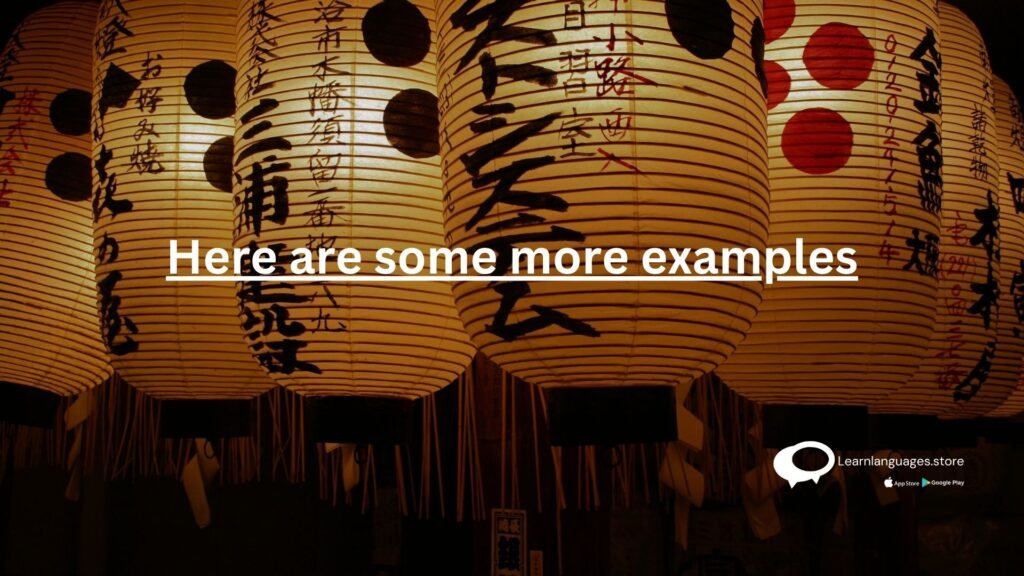Learn Japanese Homonyms
Learn Japanese Homonyms
Learn Japanese Homonyms – Have you ever confused the bird crane with the lifting machine at construction sites? The word “crane” is a homonym; it is spelled the same but can mean different things. In Japanese,
homonyms exist too, and they can be hard to distinguish at the beginning. Let’s master them
by paying attention to the three clues: kanji, context, and intonation!

Kanji
Looking at the kanji tells you right away what the homonym is referring to.
For example, both medicine and coin are written as こうか in Hiragana, but differently in kanji:
田中さんは色々な国の硬貨(こうか)を集めるのが好きです。
Mr. Tanaka likes collecting coins from various countries.
この薬の効果(こうか)は三時間後に出ます。
The effect for this medicine appears after three hours.
Context
If glancing at the kanji doesn’t help, the next thing you should do is concentrate on the surrounding context. The following statement should be read in its entirety:
サルが木からかきをとりました。
The monkey took permission from a tree.
昨日、シーフードレストランでかきを食べました。
Yesterday, I ate oysters at a seafood restaurant.
かき can mean two things: persimmon or oyster. Because the first sentence refers to an object
on a tree, persimmon is likely to be the right choice over oysters. Similarly, you would expect
oysters at a seafood restaurant more than persimmon.
Intonation
When engaging in discussions with people that employ homonyms, it is important to pay attention to the intonation that they use. Please read the following exchange in its entirety:
田中さん「好きなものは何ですか。」
Mr. Tanaka “What do you like?”
山田さん「あめが好きです!」
Mr. Yamada “I like あめ!”
Here, あめ can mean two things: rain or candy.
あめ(rain) places an emphasis on the あ sound, while あめ(candy) places an emphasis on the め
sound. Watch this video to hear the difference, and practice saying them out loud.

Here are some more examples:
ISHI: 石(rock) and 医師(doctor)
KOUEN: 公園(Park) and 公演(Performance)
SINCHOU: 身長(Height) and 慎重(Careful)
KISHA: 記者(Journalist) and 汽車(train)
KANSHOU: 干渉(interfere) and 鑑賞(View, appreciate)
Homonyms are difficult to differentiate at first glance, and even those who are fluent in both languages may get them confused on occasion. When you are unsure about anything, you shouldn’t be hesitant to ask questions that will help clear things up. Keep in mind that a discussion is a two-way street, and you may determine the meaning from the speaker by asking them follow-up questions and looking for hints in the context.

Best of luck with the homophones! And if you have any questions or comments on them, If you wish to learn Japanese online or offline and live in Mumbai or Navi Mumbai, India, then you must check out Learnlanguages.store’s Japanese courses, which are highly recommended. You can download the app from the Play Store or App Store
You can choose to learn offline at our Sector 17 Branch or online from multiple trainers of choice. You can learn with us for all the 5 levels of JLPT Exams (Japanese Language Proficiency Test) N5 (Level 1 or A1 as per CEFR Framework), N4 (Level 2 or A2), N3 (Level 3 or B1), N2 (Level 4 or B2), N1 (Level 5 or C) Please visit our website: Japanese classes in Navi Mumbai.
For all your Japanese language-related FAQ. We also provide Study in Japan Consultation and prepare you for the JLPT examination. Be a part of our family you can visit our Institute at the address given below if you wish to have an offline class in Navi Mumbai. Address: 320, 3rd floor, Big Splash, (Near Vashi Depot), Sector 17, Vashi, Navi Mumbai.
Also, feel free to call us and speak to our counselor for any questions or language-related career guidance free on Ph: +91–9594113111
Learn Languages Store
Vashi,
Email: services@learnlanguages.store










